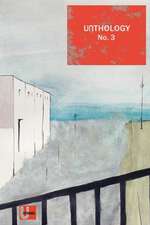The Art of Lisp Programming
Autor Robin Jones, Clive Maynard, Ian Stewarten Limba Engleză Paperback – 20 dec 1989
Preț: 328.27 lei
Preț vechi: 410.34 lei
-20% Nou
Puncte Express: 492
Preț estimativ în valută:
62.82€ • 65.35$ • 51.86£
62.82€ • 65.35$ • 51.86£
Carte tipărită la comandă
Livrare economică 14-28 aprilie
Preluare comenzi: 021 569.72.76
Specificații
ISBN-13: 9783540195689
ISBN-10: 3540195688
Pagini: 184
Ilustrații: XIV, 169 p. 20 illus.
Dimensiuni: 170 x 242 x 10 mm
Greutate: 0.3 kg
Ediția:Softcover reprint of the original 1st ed. 1990
Editura: SPRINGER LONDON
Colecția Springer
Locul publicării:London, United Kingdom
ISBN-10: 3540195688
Pagini: 184
Ilustrații: XIV, 169 p. 20 illus.
Dimensiuni: 170 x 242 x 10 mm
Greutate: 0.3 kg
Ediția:Softcover reprint of the original 1st ed. 1990
Editura: SPRINGER LONDON
Colecția Springer
Locul publicării:London, United Kingdom
Public țintă
ResearchCuprins
1 Some Basic Ideas.- Lists.- Representing Lists.- The Interpreter.- Functions.- Two More Primitives.- Constants and Variables.- S-Expressions.- Postscript.- Exercises 1.- Answers.- 2 List Functions.- Splitting Lists.- car and cdr.- Setting Up Lists.- setq.- A Piece of Pedantry.- Head and Tail Revisited.- cons.- Postscript.- Exercises 2.- Answers.- 3 Predicates.- cond.- Boolean Functions.- Exercises 3.- Answers.- 4 Recursion.- Powers.- Boolean Functions Revisited.- eq.- Meanwhile Back at the Problem....- null.- AND and OR.- flat.- first.- rest.- The Fly in the Ointment.- append and list.- Postscript.- Exercises 4.- Answers.- 5 A Look Back (and Forward).- Variables: a Sense of Place.- Variable Scope.- Variable Binding.- Free Variables.- Lexical Scoping.- A Software Engineering Problem.- setq.- System Variables.- Exercises 5.- Answers.- 6 Sets and Lists.- Sets of Numbers.- The Set Functions.- Intersection.- disjoint-p.- Subsets.- Complement.- Union.- Exercises 6.- Answers.- 7 Input.- read.- read-line.- Single Characters.- More About #.- Yes or No Responses.- Using the read Primitives.- Exercises 7.- Answers.- 8 Output.- format.- The Control String.- Printing Values.- Format Directives.- Using Arguments as Parameters.- Tabs.- Other Output Functions.- The Telephone Index Again.- The read-eval-print Loop.- The Program-Data Distinction.- Exercises 8.- Answers.- 9 Iterative Constructs.- loop.- return.- do.- The Size of a List.- Iteration v. Recursion.- dotimes.- dolist.- Mapping.- mapcar.- Exercises 9.- Answers.- 10 More About Program Control.- if.- when.- unless.- case.- Synonyms.- Defaults.- Some New Control Constructs.- let.- flet.- progl to progrc.- The Lambda Notation.- Exercises 10.- Answers.- 11 File Handling.- Pathnames.- merge-pathnames.- Streams.- Opening and ClosingFiles.- Keyword Arguments.- The Body.- Other Keyword Arguments.- Getting the File Back.- EOF-ERROR-P and EOF-VALUE.- Exercises 11.- Answers.- 12 Data Structures.- Association Lists.- pairlis.- The Dot Notation.- assoc.- rassoc.- aeons.- setf.- Database Manipulation.- Trees.- Binary Trees.- The Searching Problem.- Implementing a Binary Tree.- Growing a Tree.- Searching the Tree.- Stacks.- push.- pop.- Exercises 12.- Answers.- 13 Arrays, Strings and Structures.- Arrays.- Changing an Array Element.- Multidimensional Arrays.- Strings.- char.- string=.- string

























